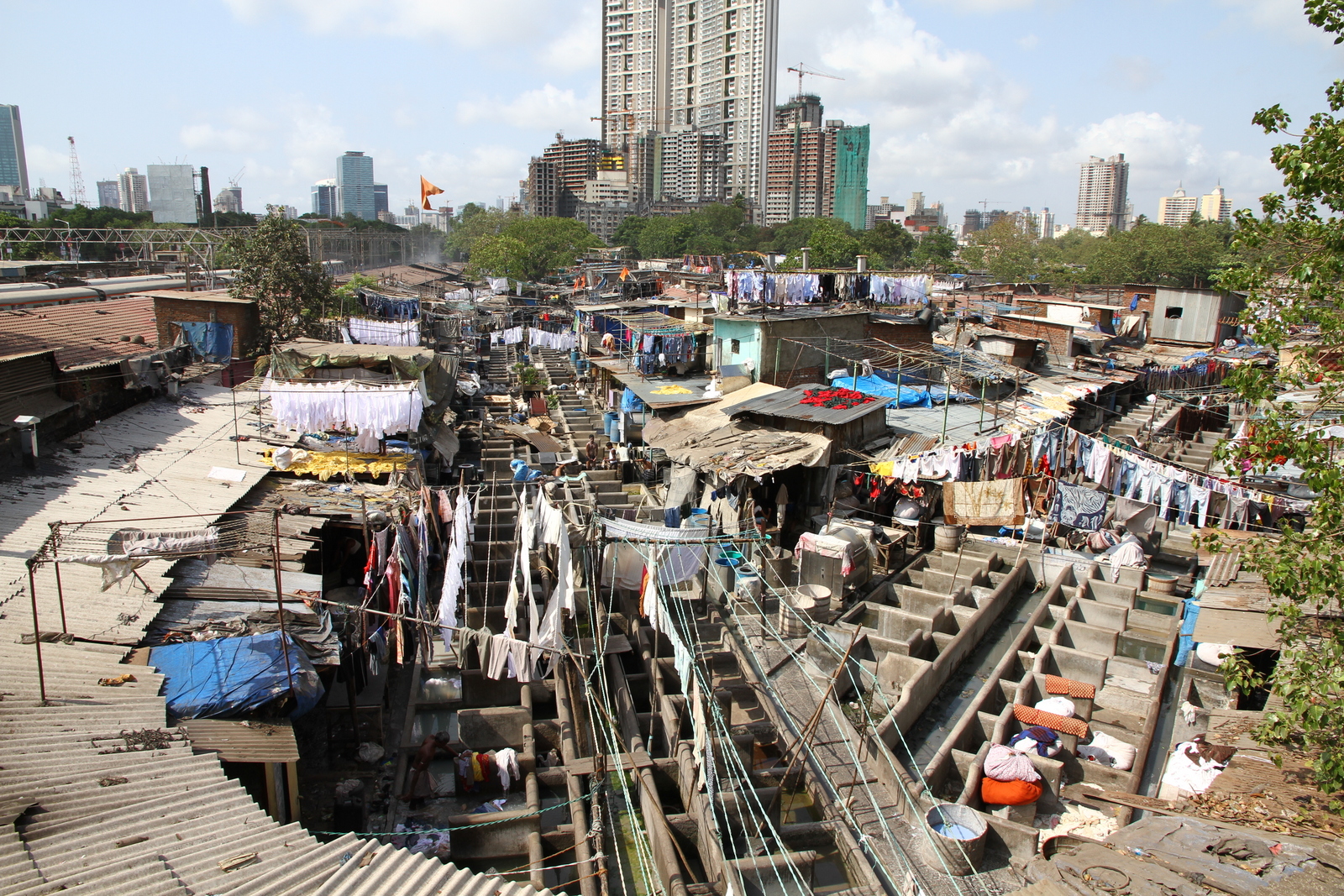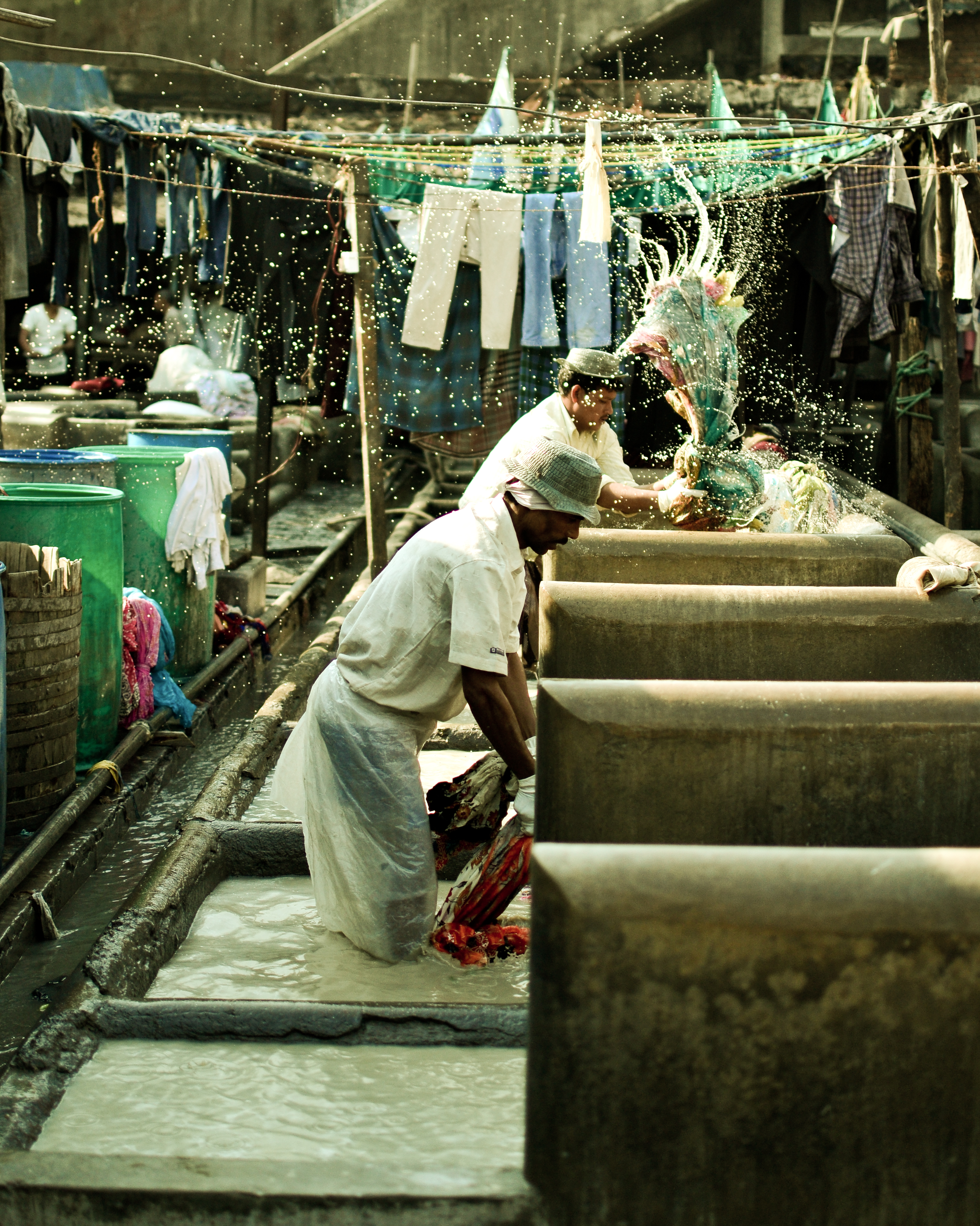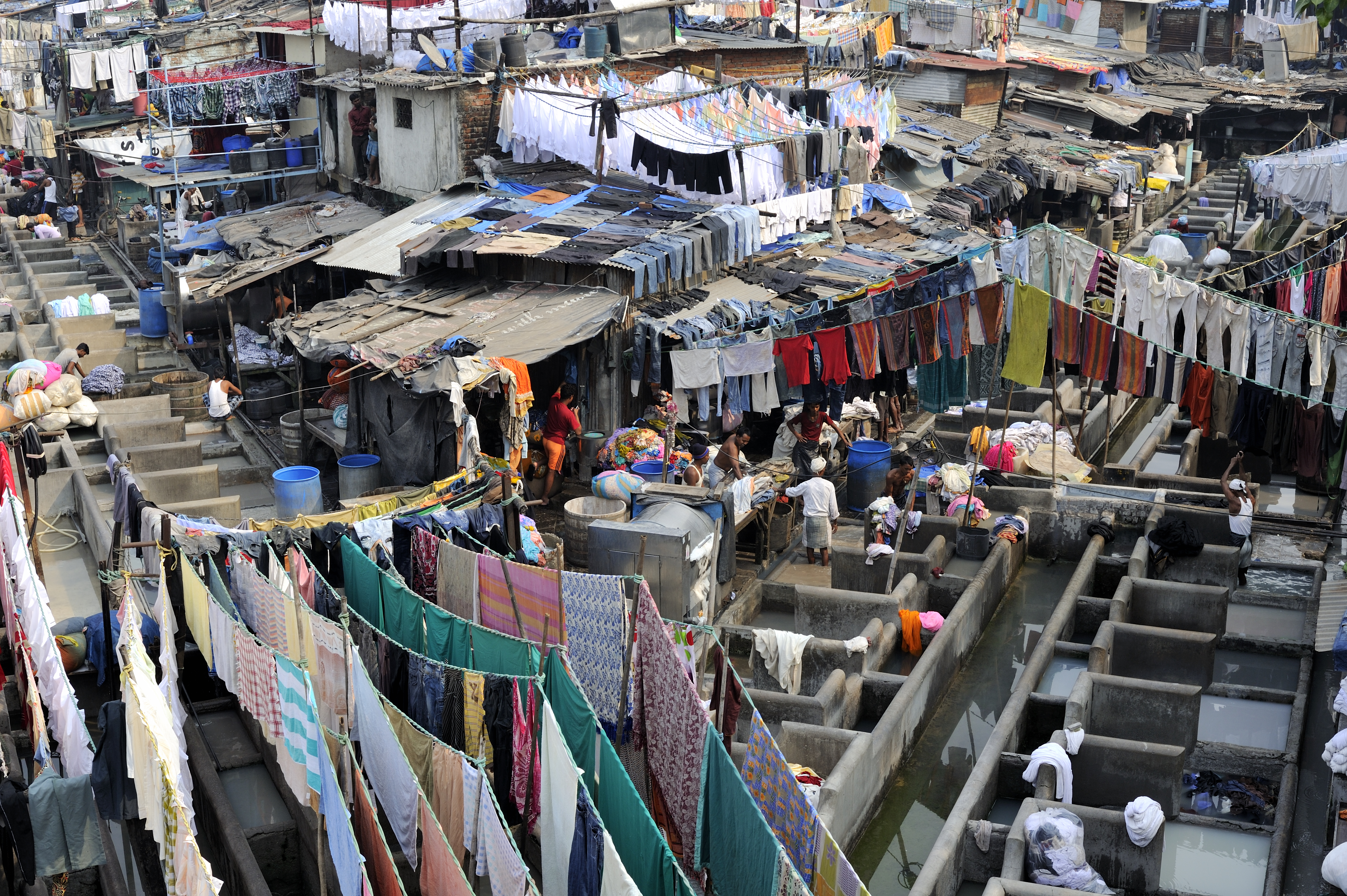Dhobi ghat on:
[Wikipedia]
[Google]
[Amazon]


 Dhobi Ghat is an open air laundry in
Dhobi Ghat is an open air laundry in

 Dhobi Ghat is an open air laundry in
Dhobi Ghat is an open air laundry in Mumbai
Mumbai ( ; ), also known as Bombay ( ; its official name until 1995), is the capital city of the Indian state of Maharashtra. Mumbai is the financial capital and the most populous city proper of India with an estimated population of 12 ...
, India. It was constructed in 1890. The washers, known as ''dhobi
Dhobi known in some places as Dhoba, Rajaka, a Scheduled Castes and Scheduled Tribes, scheduled caste in India and the greater Indian subcontinent whose traditional occupations are Clothes washing, washing, ironing, and Farmworker, agricultur ...
s'', work in the open to clean clothes and linens
Linens, also referred to uncountably as linen, are fabric household goods intended for daily use, such as bedding, tablecloths, and towels. "Linens" may also refer to church linens, meaning the altar cloths used in church.
History
The earlies ...
from Mumbai's hotels and hospitals.
The phrase '' dhobi ghat'' is used all over India to refer to any place where many washers are present. Inspired by the Mumbai Dhobi Ghat (then Bombay), the British built Dhobi Ghat in Kolkata (then Calcutta) in 1902 and there are other dhobi ghat places all over southern Asia.
Overview
There are rows of open-air concrete wash pens, each fitted with its own flogging stone. Claimed to be the world's largest outdoor laundry, Dhobi Ghat is a very popular attraction among foreign tourists. It is located next to Mahalaxmi railway station on the Western Railway suburban line in southern Mumbai. It is also accessible from the Jacob Circle monorail station. It is near Saat Rasta roundabout. The Dhobi Kalyan & Audhyogik Vikas Cooperative Society, the apex body that represents washermen, estimates the annual turnover of the Mahalaxmi Dhobi Ghat at around Rs 100 crore. For 18 to 20 hours each day, over 7,000 people flog, scrub, dye and bleach clothes on concrete wash pens, dry them on ropes, neatly press them and transport the garments to different parts of the city. Over onelakh
A lakh (; abbreviated L; sometimes written lac) is a unit in the Indian numbering system equal to one hundred thousand (100,000; scientific notation: 105). In the Indian 2, 2, 3 convention of digit grouping, it is written as 1,00,000. F ...
(100,000) clothes are washed each day. Some of the wealthier dhobis have given up on manual cleaning and have now installed large mechanical washing and drying machines.
The dhobis collect clothes from all corners of the city, from Colaba to Virar. Their biggest clients are neighbourhood laundries, garment dealers, wedding decorators and caterers, and mid-sized hotels and clubs.
The Saat Rasta Project is a proposed Public Space Project along the Bapurao Jagtap Road, connecting Jacob Circle to the Mahalaxmi Railway Station. This public space will connect to Dhobi Ghat, which is also a major tourist attraction.
Home to the dhobis and their families (around 200 families), the Dhobi Ghat has seen this occupation passed down from one generation to the next.
See also
* Dhoby Ghaut, Singapore * Dhoby Ghaut, Penang, MalaysiaReferences
{{Laundry navbox Buildings and structures in Mumbai Tourist attractions in Mumbai Laundry places Economy of Mumbai 1890 establishments in India